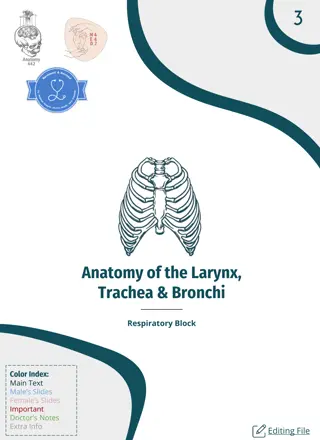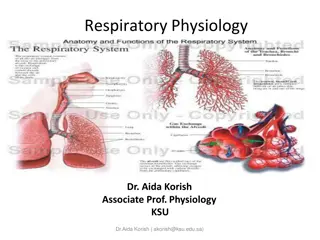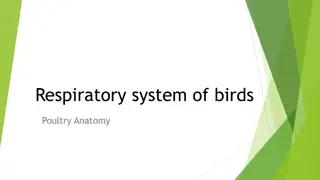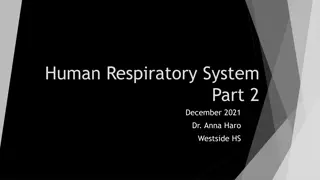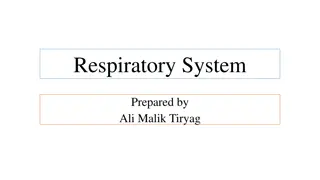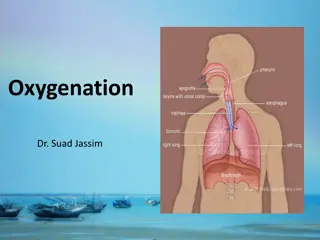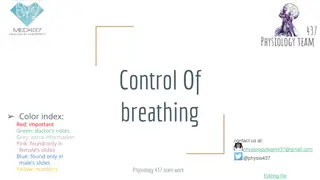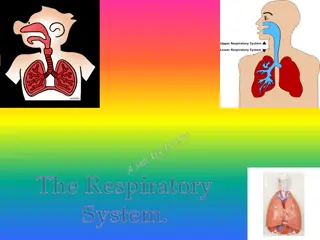Understanding the Respiratory System: Lesson Objectives and Anatomy Explained
Explore the intricacies of the respiratory system as you delve into the lesson objectives and anatomy presented by Assistant Teacher Fatima Kareem. Discover the parts of the respiratory system, from the nose to the lungs, and learn how air travels through this vital system to facilitate breathing and oxygen exchange. Gain insight into the chest cavity's role in housing essential structures like the bronchial tree and heart, forming a protective cage around them.
Download Presentation

Please find below an Image/Link to download the presentation.
The content on the website is provided AS IS for your information and personal use only. It may not be sold, licensed, or shared on other websites without obtaining consent from the author. Download presentation by click this link. If you encounter any issues during the download, it is possible that the publisher has removed the file from their server.
E N D
Presentation Transcript
Respiratory System Preparation assistant teacher Fatima kareem
Lesson objectives Lesson objectives After After the the end end of of the the lecture, lecture, the the student student will will be be able able to to: :- - ** **It is known as Respiratory System. .
The Parts of the Respiratory System The respiratory system includes the nose, mouth, throat, larynx (voice box), trachea (windpipe), and lungs. Air enters the respiratory system through the nose or the mouth. Tiny hairs called cilia protect the nasal passageways and other parts of the respiratory tract, filtering out dust and other particles that enter the nose through the breathed air. The two openings of the airway (the nasal cavity and the mouth) meet at the pharynx or throat, at the back of the nose and mouth. The pharynx is part of the digestive system as well as the respiratory system because it carries both food and air
At the bottom of the pharynx, this pathway divides in two, one for food the esophagus which leads to the stomach and the other for air. The epiglottis a small flap of tissue, covers the air-only passage when we swallow, keeping food and liquid from going into the lungs. The larynx, or voice box, is the top part of the air-only pipe. This short tube contains a pair of vocal cords, which vibrate to make sounds. The trachea, or windpipe, is the extension of the airway below the larynx. The walls of the trachea are supported by stiff rings of cartilage to keep it open. The trachea is also lined with cilia, which sweep fluids and foreign particles out of the airway so that they stay out of the lungs.
At its bottom end, the trachea divides into left and right air tubes called bronchi which connect to the lungs. Within the lungs, the bronchi into smaller bronchi and even smaller tubes called bronchioles ,Bronchioles end in tiny air sacs called alveoli, where the exchange of oxygen and carbon dioxide actually takes place. Each person has hundreds of millions of alveoli in their lungs. This network of alveoli, bronchioles, and bronchi is known as the bronchial tree. The lungs also contain elastic tissues that allow them to inflate and deflate without losing shape. They're covered by a thin lining called the pleura.
The chest cavity, or thorax is the airtight box that houses the bronchial tree, lungs, heart, and other structures. The top and sides of the thorax are formed by the ribs and attached muscles, and the bottom is formed by a large muscle called the diaphragm The chest walls form a protective cage around the lungs and other contents of the chest cavity.
Thank you for listening


